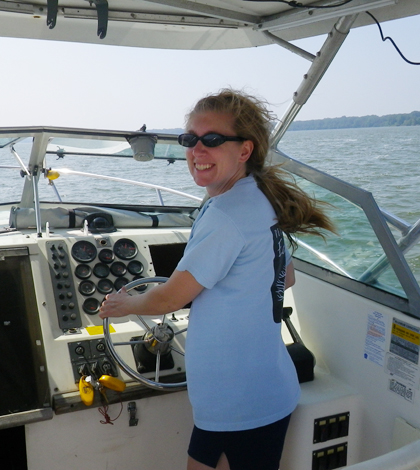Q&A: Jeanette Schnars on water quality buoys in Pennsylvania’s Lake Erie waters

Jeanette Schnars
Jeanette Schnars is the executive director of the Regional Science Consortium, a collaborative non-profit based in Presque Isle, Penn., that coordinates educational and research projects for Lake Erie and the Ohio River Basin. The Consortium’s members include colleges and universities, state and federal agencies, K-12 school districts and other non-profits. They work out of the Tom Ridge Environmental Center located at the gateway to Presque Isle State Park. The park’s beaches and other recreational opportunities draw more than 4 million visitors a year, which is more than Yellowstone or Yosemite National Parks. Schnars spoke to us about the consortium’s mission and its water quality buoys.
Environmental Monitor: How does the Regional Science Consortium’s coordinating role help improve research in the area?
Jeanette Schnars: We can put together a project and bring together researchers that might not normally interact. For one of our projects, we brought in a microbiologist from one university and a statistician from another university and another researcher from USGS. When research projects come up I usually have the ability to really bring scientists together to make a very strong team.
EM: Have you used data buoys in research applications in past?
JS: We do a lot of research on bacterial concentrations in the swimming water of our beaches. One of our projects is working to find more rapid techniques. How can we figure out the concentration more quickly? To do that, we operate two weather stations and two smaller buoys looking at only water quality parameters like temperature, pH, turbidity, dissolved oxygen and conductivity. We use that information to run several different predictive models.
EM: You’re planning to deploy another buoy this spring. What will that add to your data collecting capabilities?
JS: This buoy we’re looking at deploying in May is going to be a much larger buoy that will have the full weather station, a video camera, water quality parameters, as well as the wave sensor on it. So we’ll have wave height, wave period and wave direction, which everybody is pretty excited about. This buoy will be feeding information into the predictive models for bacterial levels at swimming beaches. We’re also working with members of the Consortium to integrate the data into their studies with fisheries, algal blooms and climate change.
EM: How will non-scientists benefit from the new buoy?
JS: A lot of people recreate on the water here. It’s definitely an attraction. Many people from out of town visit, and sometimes when the weather is questionable they will still go out in unsafe conditions. We’re hoping that this new buoy system will provide additional information on the water conditions on the nearshore Pennsylvania waters of Lake Erie and prevent anyone from being on the Lake during hazardous weather.
The data will be fed to our website, to the Great Lakes Observing system’s website and NOAA’s National Data Buoy Center. From there the information goes to the National Weather Service. Now, when the NWS reports the nearshore forecast for the Pennsylvania waters of Lake Erie, they will be using actual data that is coming from the new buoy system instead of predicting conditions like they do now. The NWS will provide the buoy information on their website, through the NOAA weather radio, and through their Dial-A-Buoy program where you can actually dial a phone number and get the information as well.
In addition to the weather station, wave sensor, and water quality sensors, there will also be a video camera mounted on the buoy system taking 30-second clips of water conditions and updating to the website every hour. We wanted people to get visuals of what the conditions look like and how the waves are moving, so this will be important.
EM: Have you heard from people in the community looking forward to this kind of data?
JS: We’ve had a tremendous amount of community support for this project. People are very excited, and not just in Erie County. We get a lot of visitors from throughout the region and everybody has really wanted this for several years. So there will be a lot of excitement that this buoy system will be deployed off of Pennsylvania water of Lake Erie in our area.




0 comments